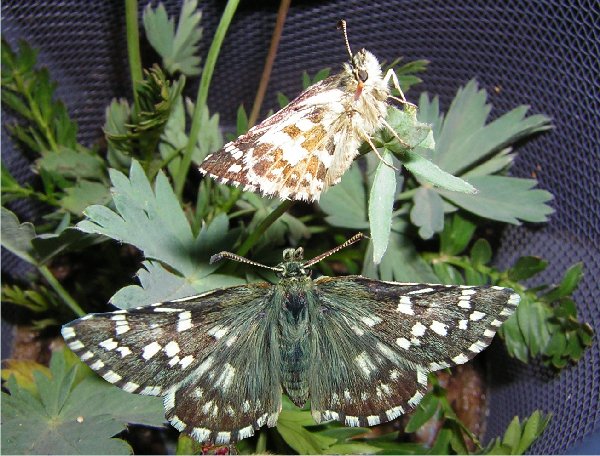Pyrgus centaureae loki

Photo Life History: Pyrgus centaureae loki
Habitat: Arctic Alpine
Host Plants: Potentilla fruticosa, Potentilla hippiana
Suitable Lab Host Plants: Fragaria vesca; Potentilla glandulosa
Caring for Live Female Butterflies: Nectaring techniques
Methods of Female Oviposition: Portable Cages; Open Screen Cages
How to Find Eggs:
How to Hatch Eggs: Consolidate eggs into one container
How to Find Caterpillars in the Field: Skipper Nests (Scroll down to find skipper nests for the grizzled skipper.)
Caterpillar setups: Potted Plants; Open terrariums
Overwintering Stage: Early instar larva and pupa (biennial)
Overwintering Strategies: Your Own Backyard;
Larva to Pupa:
Emergence: Emergence Container
Number of Broods per Year: 1; biennial
Avoiding Diapause Techniques: Healthy Host Plant. Although biennial, larvae that feed on healthy host plant will go through to pupa the same year. I know of no way of avoiding pupal diapause.
Disease Prevention:
Field Notes: This can be a difficult butterfly to raise because of the size and accessibility of lab host plants. I overwintered four healthy pupae that did not break diapause the next spring. David James and Dave Nunnalee successfully reared this butterfly to adult by exposing pupae to more humidity than I did. Live females also oviposited on Potentilla ovina. Note: Pyrgus centaureae wyandot larvae perish on Potentilla glandulosa.

